
How to remove old wallpaper from the walls do it yourself Wallpaper,Walls
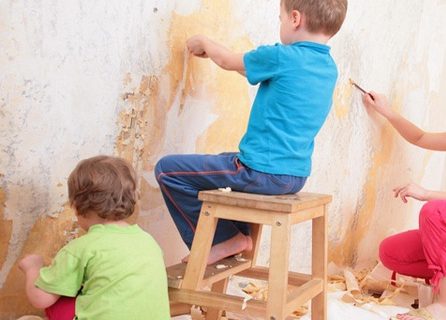
Wallpaper sticking with your own hands is not very difficult work, although it requires some knowledge, skills and skills. The calculation of walls with wallpaper consists of several stages. One of the stages implies the preparation of walls under the sticking of wallpaper. In addition to other actions, according to the proper preparation of surfaces under the wallpaper, such a process is to be implemented as the removal of old wallpaper. These actions, usually, do not cause problems. However, and here, it is necessary to do everything correctly to spend as little effort as possible and not to create superfluous problems.
Content
The need to remove old wallpaper
Surely still fresh in the memory of many memories as before pasting wallpaper walls covered the layer of old newspapers. Therefore, someone may have a thought, and may not be able to remove old wallpaper. In those days, when the newspaper was glued to the walls before sticking, it was not very easy to find (and there was not a very large selection of them) mixtures for alignment and preparation under the stocks of the walls. In addition, the choice of glue for wallpaper was not great. That glue that was available not very well kept on the bare walls thick paper wallpaper.

Now everything has changed. A huge selection of building mixtures allows you to perform any preparatory work for the preparation of walls under the shocking of wallpaper. And specially designed species of adhesive compositions intended for specific types of wallpaper make the procedure for sticking wallpaper in advance successful, the main condition is observance of technology.
So, what is the need to remove old wallpapers from the walls:
- Walls under old wallpaper may have irregularities and other defects. All these flaws need to be opened and eliminated using special means and technologies.
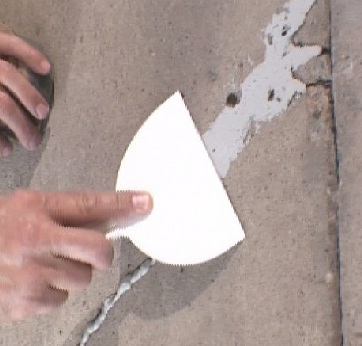
- Even the most reliable glued areas of old wallpapers may not withstand the severity of several layers, especially if you glue heavy wallpaper with a thick decorative surface or on a heavy-based (for example, on a fliesline-based vinyl coating).
- Old wallpapers, when gluing new ones, can appear under them and form bubbles that will undoubtedly require additional effort and costs.
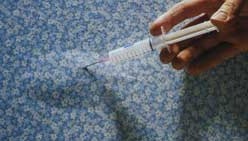
- The most unpleasant is that under old wallpaper can start the mold, then it is indeed, all the work on updating wallpaper will be spoiled.
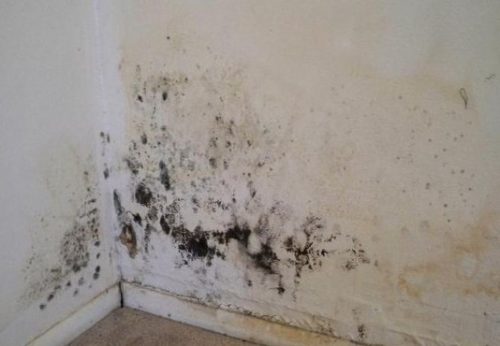
Preparing the necessary materials and tools to remove old wallpaper
So, it became apparent that from old wallpapers on the wall it is necessary to get rid of. But it's not possible to make it easy to tear off the walls of the walls. Rather, in some places it will be possible, but mostly will have to use additional tools and materials.
Wallpapers there are several types and technologies for their sticking, too, may differ. Such differences, of course, determine the choice of tools used, as well as additional means of contributing to a more thorough removal of the used wall-mounted cloths from the walls.
Here is the most common list of tools and materials:
- Metal spatulas of various widths.
- Scraper with fixed blade and sliding handle.
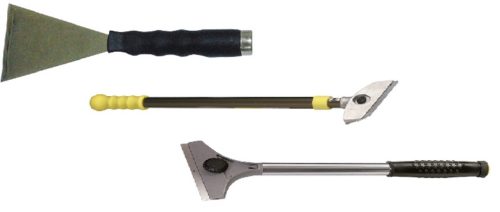
- Roller with spikes (perforated roller). It is considered a tool professional and if they do not use it correctly, then you can damage the top layer of wall plaster under the wallpaper.

- Local "Tiger". More sparing walls, when applied, tool. It has less long and softer spikes. Also, its design allows you to more directly distribute the affecting efforts to the surface and maneuver on a smaller part of the wall.
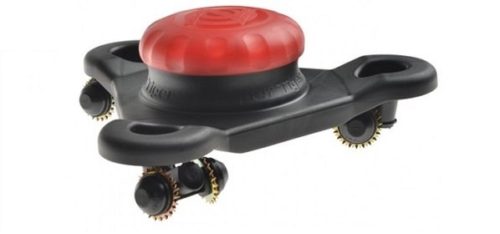
- Brushes of various stiffness, widths (including metallic).
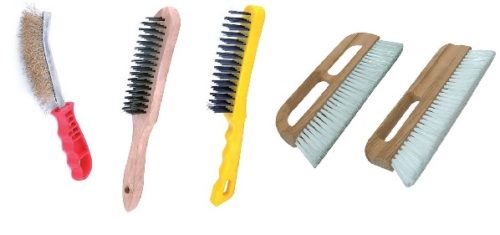
- Wallpaper removal means. There is a whole list of such funds. The most famous and proven themselves are like: Zinsse, Quelyd Dissoucol, Atlas Alpan, Metylan. It is necessary to carefully study the instructions for the use of such funds. Many funds can damage wooden and other surfaces are not resistant to substances that make up such means. Therefore, it should be used to remove wallpaper to remove wallpaper (also in terms of opening areas of the skin, and in the eye), pre-defending all recommended in the coating instructions from their impact.

- Caprics for the preparation of flushing compositions of 5 to 10 liters, rubber gloves.
- Sponges and rollers for applying cohesive compositions, etc.
- Sprayer or sprayer.
- Iron or steamer.
- Malyary Scotch.
- Soap and water. It is necessary to prepare a solution for clarifying and removing the old wallpaper glue when removing wallpaper. It is used if not used, more efficient, special means to remove wallpaper. Water is better to use warm.
- The knife is ordinary and construction.
- Ladder.
- Polyethylene film for floor covering. Protects the surface of the floor from damage and contamination. In addition, rolling the film along with remote clipping wallpaper, you will greatly facilitate your room cleaning work.
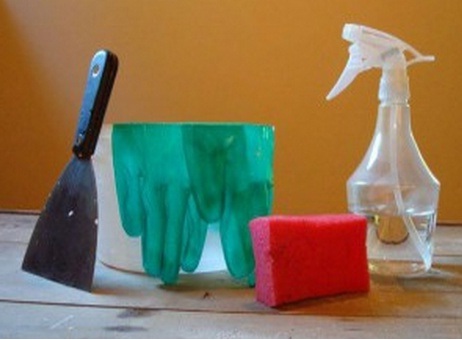
Removing old wallpaper
Since wallpapers are different, the process of their removal will also differ somewhat. However, there are several general tips that can be applicable in each case.
- Before starting work, the floors of the polyethylene film are shut. For its fixation, use the greasy tape.
- Actions to remove old wallpaper should be guided from top to bottom.
- First, the angle of the metal spatula is pond the upper edge of the web, and then sending a pulling force down separated the strip from the wall.
- It is necessary to pull the strip until it gives up and separated from the wall surface. Try, commensurate how the canvas can be separated, distribute drawn efforts on the area of \u200b\u200ba separated piece of wallpaper, so as not to break it into small parts. This will reduce labor costs and reduce the number of areas for re-processing with softening composition and scraps them with metal tools.
- To avoid unnecessary to fill the room with dusty weighing, it is better to wet the wallpaper before removal.
- Wallpaper moisturizing before removal is best done as work, individual sites. Otherwise, if you want to wet them in advance (if this is not required by the instructions for removing the wallpaper), they are on the plot to which you will get through time, it is already dried and then dust cannot be avoided.
- Mind the old wallpaper is also necessary, also without excessive use of the cooked solution. Too large amounts of fluid, applied to the wallpaper, can lead to destruction and peeling to spacure on the wall. This will entail the need to perform additional work on the shtlocking of the walls, after removing the wallpaper. In addition, a large amount of fluid applied to the wall may simply drain from wallpaper without having time to impregnate them. The small amount of moisture will not allow enough to achieve the desired effect, soak the wallpaper structure.
- To obtain a larger effect, when soaking old wallpaper, you can use a steamer or iron with a similar function. In addition, the iron can be sipped and through a moistened fabric.
- In those places where the wallpaper could not be removed by all cooked tools, it is necessary to re-process with a coined solution. Also, it is necessary to use a spiked roller or another tool (for example, a knife) for perforation of the layer of old wallpaper.
- Before proceeding with the moisturization of the walls, it is necessary to disconnect electricity in this room. Otherwise, the moisture can get into electrical wiring and a closure will occur. Electrical switches and sockets are necessary, for the same purposes, make painting scotch.
- You can apply solutions to remove wallpaper with painting rollers, sponges, fabrics, brushes or sprayers.
- After the wallpaper breaks the specified time (according to the instructions for the removal of wallpaper) in the impregnated state, you can proceed to their separation from the wall. To do this, are used, in the places of their most durable compound with the surface of the wall, spatulas, scrapers and other metal tools. To act a spatula, etc. It is also necessary, also with caution, fearing damage the outer layer of the wall plaster.
- Extremely carefully will need to be valid when removing wallpapers from drywall. It is necessary to fear the convergence, which will spoil the outer cardboard layer, as well as carelessly with a spatula and other metal tools. Knowing that the cardboard has several paper layers, one can carefully separate the wallpapers along with one of these layers. After separation from the drywall, old wallpaper must necessarily be necessary, before pasting new, sprinkle and primed the surface of the drywall.
- If you know exactly that old wallpapers are pasted on the wall surface with plastered cement plaster, then you can not be afraid to spoil it excessive moisture.
- After complete removal of old wallpaper walls, before preparing them to pasting new, it is necessary to dry thoroughly.
Removal of paper wallpaper
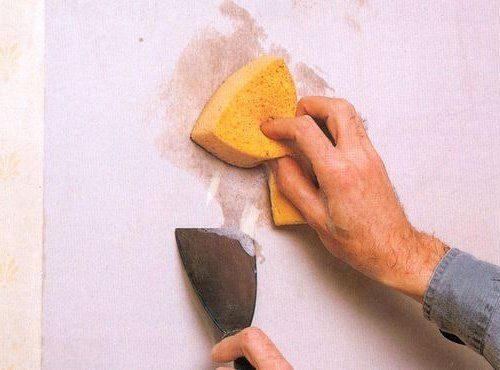
Paper wallpapers are considered to be the most difficult to remove them. First, due to their weak strength, they immediately rush and removal takes place with small areas, which is quite laborious. Secondly, due to its pliable structure, they are very tight and firmly glued to the surface, which also greatly complicates the process of their separation from the wall.
With all this, paper wallpapers do not require special means to remove them. It is quite possible to do warm water with detergent. Humming up the wallpaper, which you decided to separate from the wall in the near future, you need to wait 10-15 minutes and proceed to action. First manually separate those stripes that are well removed. Next, working with a spatula and a scraper to remove the remaining areas of old cloths.
Removal of flieslinic wallpaper
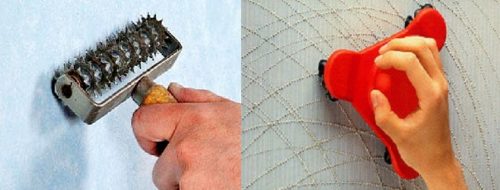
When removing flieslinic wallpapers, simply water can no longer do. This type of wallpaper is manufactured on a synthetic basis that water will not solvent. Here will be needed special means to remove such wallpapers and a wider list of suitable fixtures.
The complex and multilayer structure of flieslinic wallpaper prevents the penetration of the affecting composition inside. Therefore, the old wallpaper canvases are needed to reflect the roller with spikes, a wallpaper "tiger" or simply having caught the construction knife. Through the obtained holes, the liquid will flow to the base of the wallpaper and to affect it as necessary.
Actions must be performed in the following order:
- Using the perforation tool, go through the surface of the site with removable wallpaper.
- Apply a means to remove wallpaper on the surface of the cloth using a roller or other cooked tool. Apply as much composition as much as necessary for the complete impregnation of the wallpaper canvase.
- After the time specified in the instructions for use to the used medium (approximately 10-15 minutes), proceed to the separation of wallpaper strips from the wall.
- Next, follow all the necessary actions mentioned above.
Removal of vinyl wallpaper
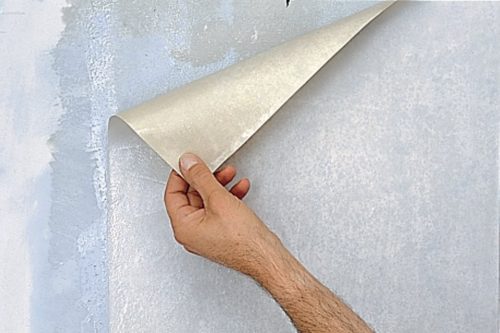
The process of removing vinyl wallpaper is similar to the procedure for working with fluiseline canvases. The used special means affecting the adhesive base of vinyl wallpaper is also necessary using perforation to provide access. And at the expense of its strong structure, such wallpapers are separated by almost whole stripes and quite easily.
Removal of liquid wallpaper
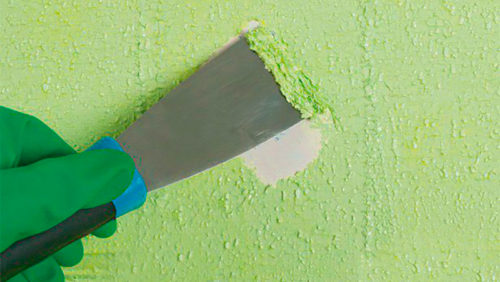
Liquid wallpapers are a decorative and finishing coating including in its composition cereal from cellulose or cotton with dyes and other components. Wallpapers are held on the surface of the water-soluble glue included in their composition. Therefore, the removal of such wallpapers does not cause difficulties, since their glue base is well dissolved by conventional water. Actions to remove liquid wallpapers Next:
- Well feed and soak with warm water. For which use Cup, brush or sprayer.
- If the wallpaper is not swallowed enough, repeat the humidification procedure again or several times in a row.
- When the wallpaper is enough, remove them using a spatula or scraper.
- If you plan to apply a remote mass again, then place it before use, in a sealed container.
- Act with a metal spatula and water until the wallpaper composition is completely removed from the wall.
Removal of fiberglass wallpaper
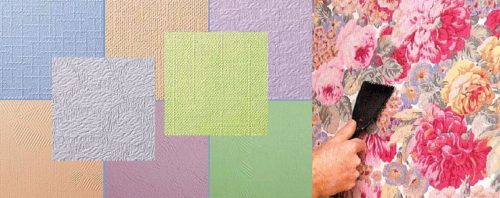
Fiberglass wallpapers are a waterproof rolled composition of fiberglass. To remove them, it is necessary to use the special composition of the means to remove them. This composition is applied to the surface of the wallpaper and further penetrating into the structure to the base softens the adhesive base and after 15-20 minutes (according to the instructions for use) the canvas can be separated from the wall. To do this, with a spatula, you must pose the upper edge of the web and pull it from top to bottom as described above.
So, subject to not difficult in the design of the nuances, the removal of old wallpapers turn into a simple procedure for the preparation of walls to stick new wallpaper.


















